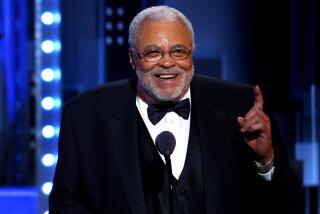MOVIE REVIEW : ‘Tom Jones’ Up to His Old Tricks Again in Re-Edited Version
- Share via
In answer to the obvious question, yes, the newly re-edited version of the 1963 film “Tom Jones” (at selected theaters) does seem dated--not so much in its odd, adventurous stylistic quirks, many of which hold up better than you might expect, as in its loose, mocking, anti-conservative moral tone, so contrary to our own cautionary movie age. It’s a free-wheeling, fast-moving relic from a time when “bawdy” wasn’t bad and sex comedies still celebrated sex.
This Tom Jones is essentially a decent fellow whose big weakness is his near-fatal fondness for the ladies, a bad habit that director Tony Richardson and screenwriter John Osborne (adapting the Henry Fielding novel) saw fit not to punish. That was the era of JFK and overlooked dalliances; this is the era of Gary Hart, and it’s hard to imagine a major movie today offering as roguishly sexual a character as a lovable, popular hero.
In this re-release, for which Richardson has snipped out seven minutes (from scenes which, in retrospect, he felt played too slowly) and helped mix a new stereo sound track, Albert Finney looks impossibly young and twinkly-eyed as Tom, whose strong libido gets him hamstrung in the England of the 1740s. Finney was Oscar-nominated; Richardson, Osborne and composer John Addison all won in their respective categories, as did the movie itself.
This may still be one of the stranger films ever to win the best picture Oscar. The breezy action and comedy are accessible enough, but--in a period piece, no less--Richardson was playing with the kinds of montages, wipes, fast-motion footage and self-referential nods to the camera seen in so many youth-oriented films soon after (“A Hard Day’s Night” for one). Among the more memorable sequences, the bloody deer hunt is disarmingly frenetic, while Finney’s suggestive dinner with a bone-gnawing prostitute remains a small masterpiece of conspicuous consumption.
“Tom Jones” is a product of the excesses as well as the experimentalism of its time: Some of the style quirks are just silly, and there’s a tiresome nudge-nudge, wink-wink quality to much of the humor. It’s well worth a repeat visit, though, and a theater is the place to do it; the intentionally dark, grainy photography that bleaches out on home video has been put right.
In an age of careful restorations and added footage, you also have to admire the nerve of a director such as Richardson (or Karel Reisz with “Isadora”) humble or nit-picky enough to go back and trim overlong moments from the original, regarding his prize-winner not as holy writ but as good, not-entirely clean fun.
More to Read
Only good movies
Get the Indie Focus newsletter, Mark Olsen's weekly guide to the world of cinema.
You may occasionally receive promotional content from the Los Angeles Times.










